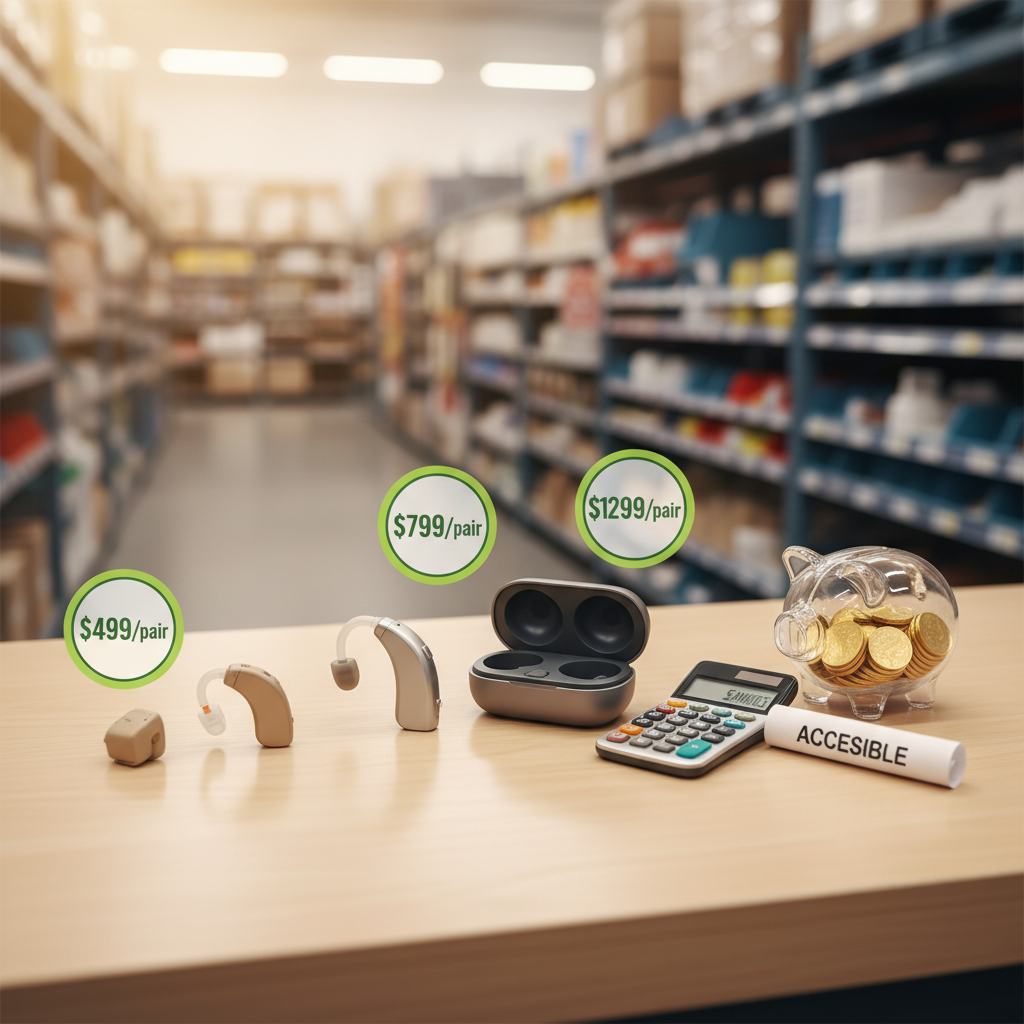For many individuals with hearing loss, the high cost of hearing aids can be a significant barrier. Traditional hearing aids typically range from $1,000 to over $6,000 per device, putting them out of reach for many people who need them. However, affordable alternatives exist for those willing to explore different options and programs.
Costco's Hearing Aid Centers
Costco emerges as a frequently recommended budget-friendly choice for quality hearing aids. The retailer offers competitive pricing that can save thousands compared to traditional hearing aid providers.
For example, the Jabra Enhance Pro 10 costs under $2,000 at Costco, compared to premium alternatives exceeding $4,500 at specialized clinics.
What Costco Offers:
- Complimentary hearing evaluations
- Professional adjustments and follow-up care
- Repairs and maintenance
- Three-year warranties
- Two-year loss and damage coverage
- Competitive pricing on name-brand devices
The combination of quality products and comprehensive service makes Costco an excellent option for budget-conscious consumers who don't want to compromise on quality.
Community Assistive Devices Program (ADP)
Ontario residents can access the Assistive Devices Program (ADP), which provides financial assistance for hearing aids. The program offers $500 per hearing aid, totaling $1,000 for a pair.
ADP Qualification Requirements:
- Resident of Ontario
- Assessment by a registered audiologist
- Completion of application process
- Purchase from authorized vendors
This program can significantly reduce the out-of-pocket cost of hearing aids for eligible residents, making quality devices more accessible.
Demo Models and Previous Generations
Hearing centers frequently offer discounted demo models and older-generation devices in excellent condition. These options provide modern features like Bluetooth connectivity and advanced sound processing at a fraction of the cost of the latest models.
Benefits of Demo and Previous Generation Models:
- Substantial savings (often 30-50% off retail)
- Modern features including Bluetooth and smartphone connectivity
- Full warranties in many cases
- Excellent condition with minimal use
- Same professional support as new devices
Don't overlook these options—last year's technology is often more than adequate for most hearing loss needs.
Understanding Your Specific Needs
The article stresses the importance of consulting qualified audiologists to determine appropriate hearing aid types based on hearing loss severity. Not everyone needs the most expensive or advanced hearing aid on the market.
Hearing Loss Categories:
Mild to Moderate:
- May accommodate affordable over-the-ear models with domes
- Good candidates for OTC hearing aids
- Wide range of product options
Severe to Profound:
- Typically require custom-fitted solutions
- Need more powerful amplification
- Professional fitting essential
Working with an audiologist ensures you invest in a solution that matches your actual needs rather than overpaying for unnecessary features.
Medical Tourism Considerations
The article cautions against international purchasing of hearing aids due to several complications:
- Device compatibility issues with local support services
- Warranty complications and restrictions
- Service availability concerns for adjustments and repairs
- Potential regulatory differences in device standards
While international options may seem cheaper initially, the lack of local support can negate any cost savings.
Single Hearing Aid Options
Individuals requiring aids for only one ear can halve their costs. Many people have asymmetric hearing loss, meaning one ear has significantly better hearing than the other.
Considerations:
- Consult with an audiologist to confirm single-ear recommendation
- Some people benefit from binaural (two-ear) hearing even with asymmetric loss
- Starting with one aid can be a cost-effective way to begin treatment
- Can always add a second aid later if needed
Professional medical guidance should inform this decision to ensure optimal hearing outcomes.
Conclusion
Affordable hearing aids are accessible through various channels:
- Warehouse retailers like Costco
- Government assistance programs like Ontario's ADP
- Demo and previous generation models
- Professional audiologist guidance to match needs with budget
- Single-ear solutions when appropriate
The key is to be proactive in exploring options and working with qualified professionals who can help you balance your needs with your budget constraints. Better hearing doesn't have to break the bank—you just need to know where to look.
Remember: untreated hearing loss can lead to social isolation, depression, and cognitive decline. Investing in affordable hearing solutions is an investment in your overall health and quality of life.
